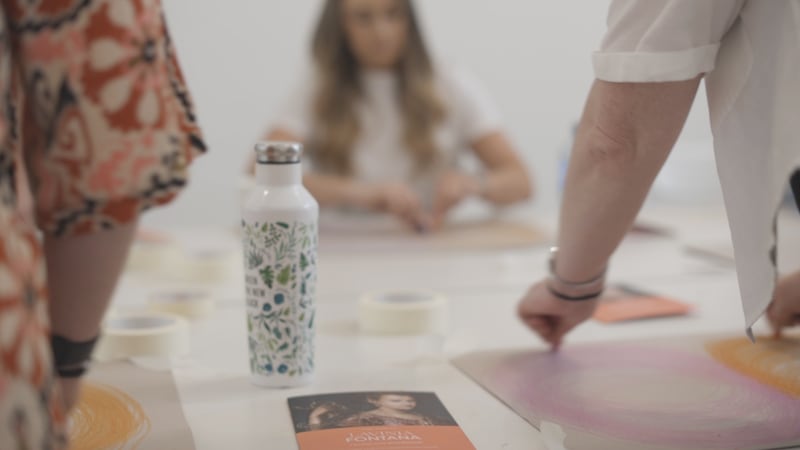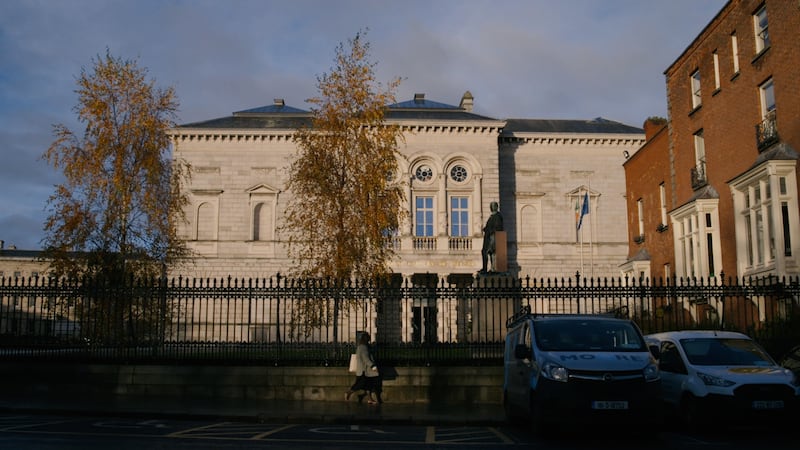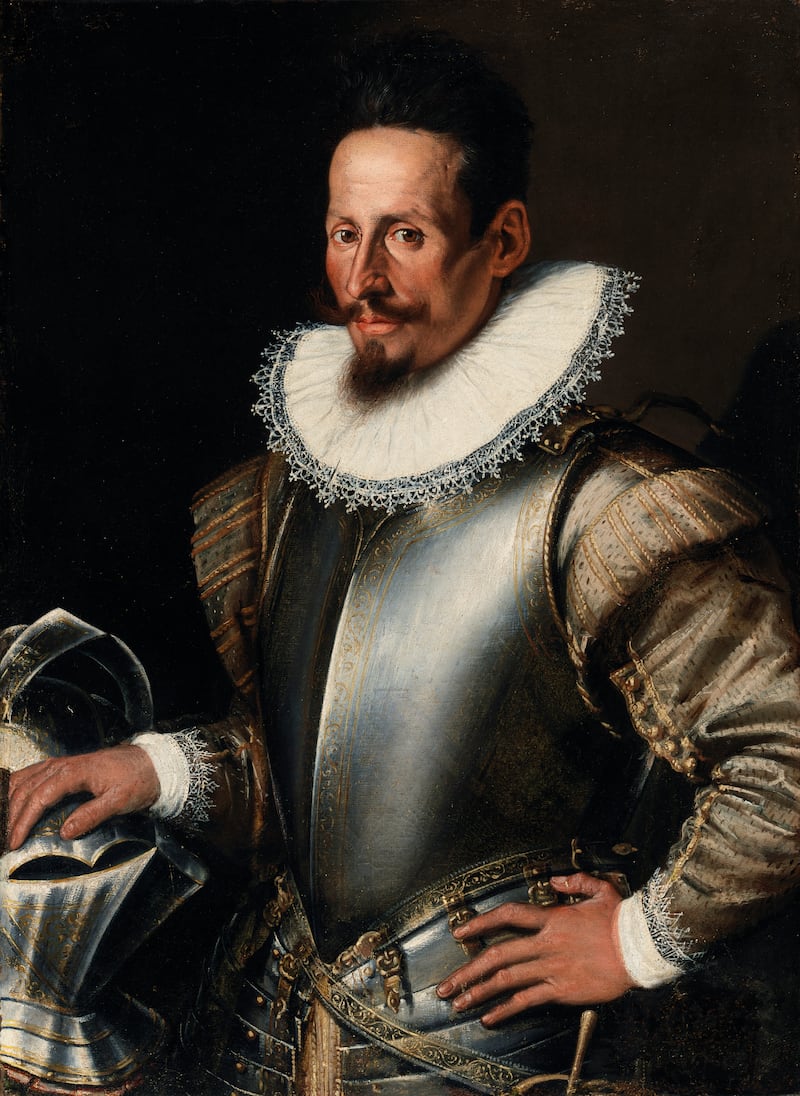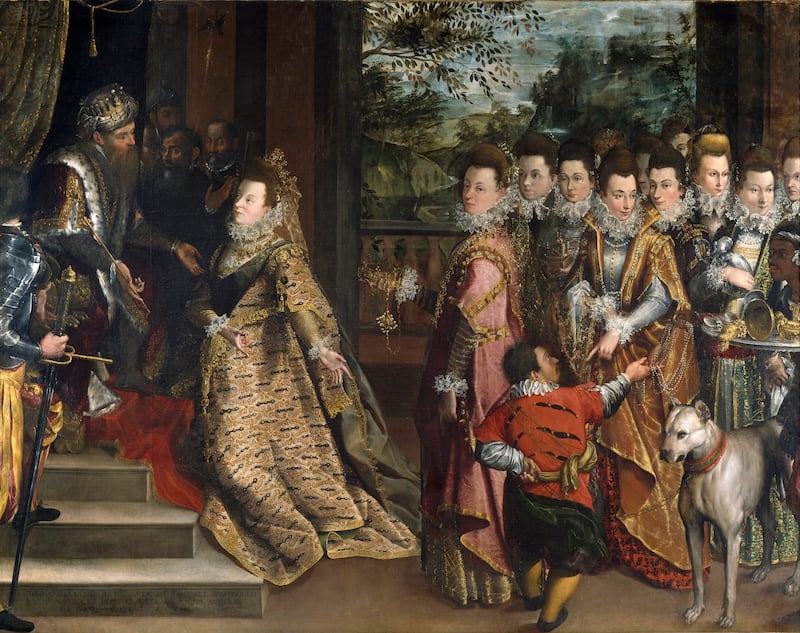Mary*, a survivor of domestic abuse, describes the cultural art therapy sessions she attended in the National Gallery, Dublin as “like a big hug on the inside”.
“We talked. Some days, we cried. But we always had a laugh. It’s about being heard by somebody who knows the trauma we share, as I had never met anybody in my situation before.”
Although keen to remain anonymous to protect the identity of her children, Mary speaks openly about her experiences. “When you talk about domestic violence, you usually think about women who are financially dependent on their partners – but I earn three times what my ex-husband earned. I carried so much shame about how easily it happens, how it starts slow and how one normalises so many things. I am an independent, educated, capable person who had no value or self-belief at home.”
Mary was one of seven women, all of whom had suffered from domestic violence, who took part in 10 weekly sessions, led by an art therapist. During the two-hour sessions, they observed paintings slowly and closely, created their own art pieces and reflected on the experience.
RM Block


To look at a piece of work and connect with it can bring up a lot for someone. But to be that person to hold that space for these women and then go back to the studio and make art and share what we made was magical for me
— Art therapist Andrea Plunkett
“When you live with domestic violence, you can never relax – even at nighttime. But this was a lovely safe space for us where we didn’t feel judged,” says Mary.
The sessions were led by Andrea Plunkett, an art therapist who works with groups in the National Gallery. “Cultural art therapy is different from art therapy in that it is held in a cultural space. We use art as an object to project on to. Everyone sees something different because it’s about what’s already happening in your subconscious,” explains Plunkett.
For Mary, spending time in the National Gallery was not daunting as she was already a regular visitor, but for all the other women it was their first time in the institution. Even Nadine O’Brien, director of services at Saoirse Domestic Violence Services, the partner on the project, explains that she had never set foot in the gallery before the project began.
“There was a little bit of shame around that for me – that as a professional woman with a Masters degree I hadn’t been into the gallery. But the class I’m from, you don’t go into galleries,” O’Brien says.
[ New €6.5m domestic violence refuge for women and children opens in WexfordOpens in new window ]
Shame, stigma and lack of sense of belonging is something that many of the women who suffer from domestic violence have too, she says. “So, there was value in my feelings about the gallery and a direct connection with what they carry with them on a daily basis.”
That the group chose to view paintings by the 16th century Italian artist Lavinia Fontana was also significant. The Renaissance portrait painter from Bologna is widely considered to have been the first female artist to achieve commercial success, as well as being a wife and mother.
Making art helped them process information and trauma that is otherwise hard to make sense of. Domestic violence is worse than it’s ever has been, so it’s about giving people who engage with our services an educational healing opportunity in a public space
— Nadine O’Brien of Saoirse Domestic Violence Services
“That my first introduction to the gallery was to see Lavinia Fontana – a feminist trailblazer whose husband was at home looking after the children – was a heartfelt experience for me that leaked into the work,” says O’Brien.
Plunkett describes how “uplifting” it was to have people feel safe in the National Gallery. “To look at a piece of work and connect with it can bring up a lot for someone. But to be that person to hold that space for these women and then go back to the studio and make art and share what we made was magical for me,” she says.

“Some women have had experiences they can’t speak about. It’s in their bodies, their minds and their thoughts – but this allows them to sit down and focus on what’s in front of them for a few hours.”
O’Brien says this type of therapy can give women who are no longer in a refuge, and have moved beyond the crisis stage of dealing with domestic violence, a sense of hope and a pathway to freedom.
[ ‘Alarming increase’ in physical and economic domestic abuse, says reportOpens in new window ]
“Making art helped them process information and trauma that is otherwise hard to make sense of. Domestic violence is worse than it’s ever has been, so it’s about giving people who engage with our services an educational healing opportunity in a public space.”
Saoirse offers accommodation to women across southwest Dublin and west Wicklow, as well as outreach services for families and court accompaniment.


Brina Casey, psychotherapist and National Gallery education officer, says she welcomes the opportunity to develop open and inclusive spaces within the gallery. “People go into libraries and sit down to read the newspaper. We want the gallery to work like that. We look after objects and take care of things. We can take care of people in exactly the same way.”
On Wednesday of this week, the gallery hosted a screening of No Words, a short film on the cultural art therapy project for colleagues in other cultural institutions, art therapists and interested members of the public.
“We want people to take this as a model and bring it to other institutions,” says Sinead Rice, head of education at the gallery. Opening up new possibilities in education is at the heart of this: “The gallery can provide respite and sanctuary and engage our heads, hands and hearts. Our work is to challenge preconceived ideas of a gallery being an austere, boring place that’s not for you.”
Meanwhile, as chair of the Irish Association of Creative Art Therapists, Plunkett hopes to train others in cultural art therapy. “When I started this work in 2018 in the RHA Gallery, it was the first time it was done in a cultural space in Ireland. Now, I want to train other art therapists so that they can go out and lead the way in their local museums,” she says.
O’Brien also sees a value in offering such therapy to people working on the frontline of services for vulnerable groups. “These people can experience trauma and burnout and can be quite dark in their world view, so I hope this would help them take care of themselves,” she says.
The National Gallery cultural art therapy project with Saoirse Domestic Violence Services was financially supported by the Bank of America. The National Gallery is making plans to have a residential art therapist on site on a permanent basis from 2025.
*Mary is a pseudonym to protect the family of the woman who spoke to us about her experience of domestic violence.
Saoirse Domestic Violence Services free 24/7 helpline: 1800 911 221. Women’s Aid 24-hour national freephone helpline: 1800 341 900
- Sign up for push alerts and have the best news, analysis and comment delivered directly to your phone
- Join The Irish Times on WhatsApp and stay up to date
- Listen to our Inside Politics podcast for the best political chat and analysis

















